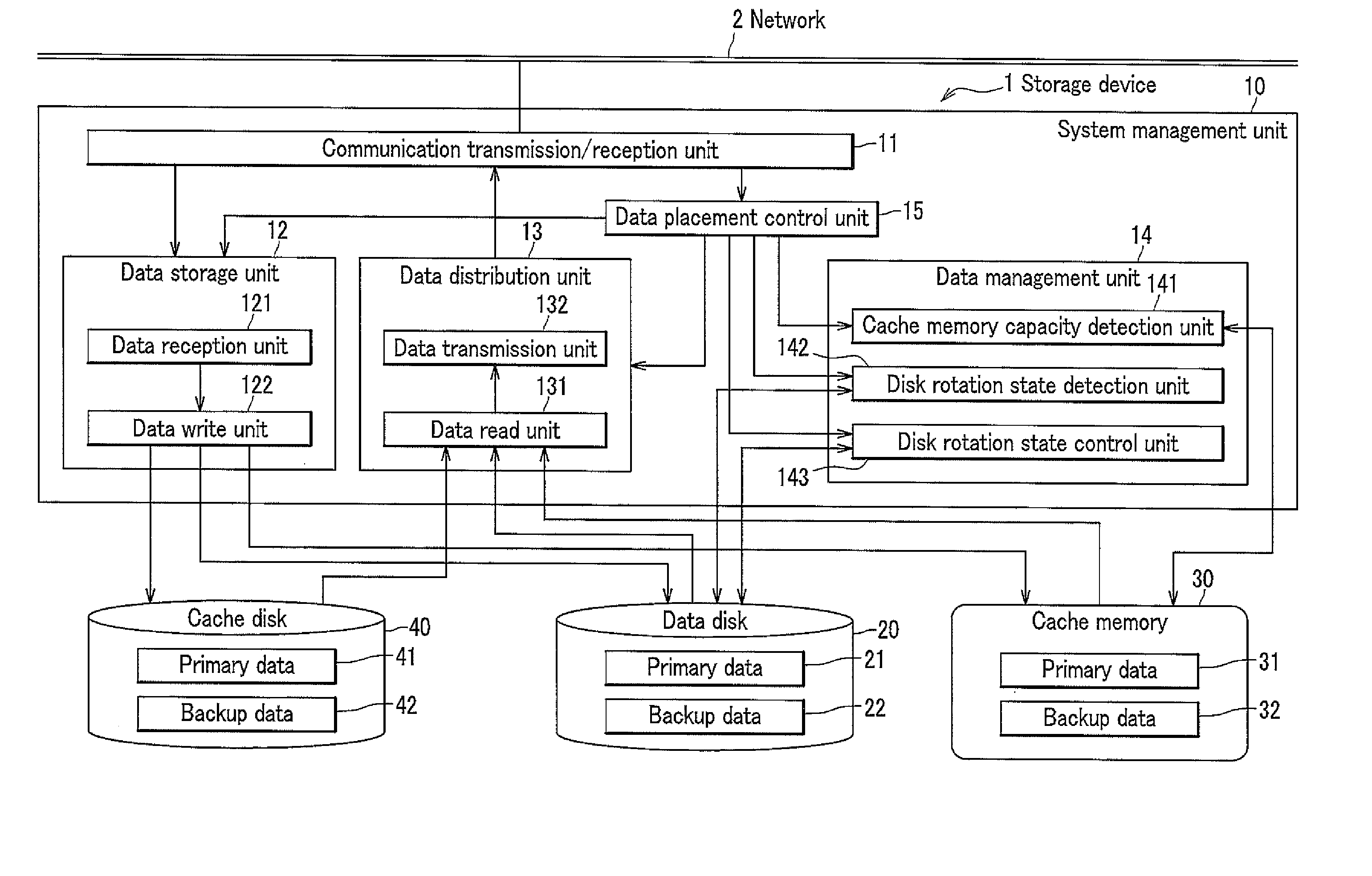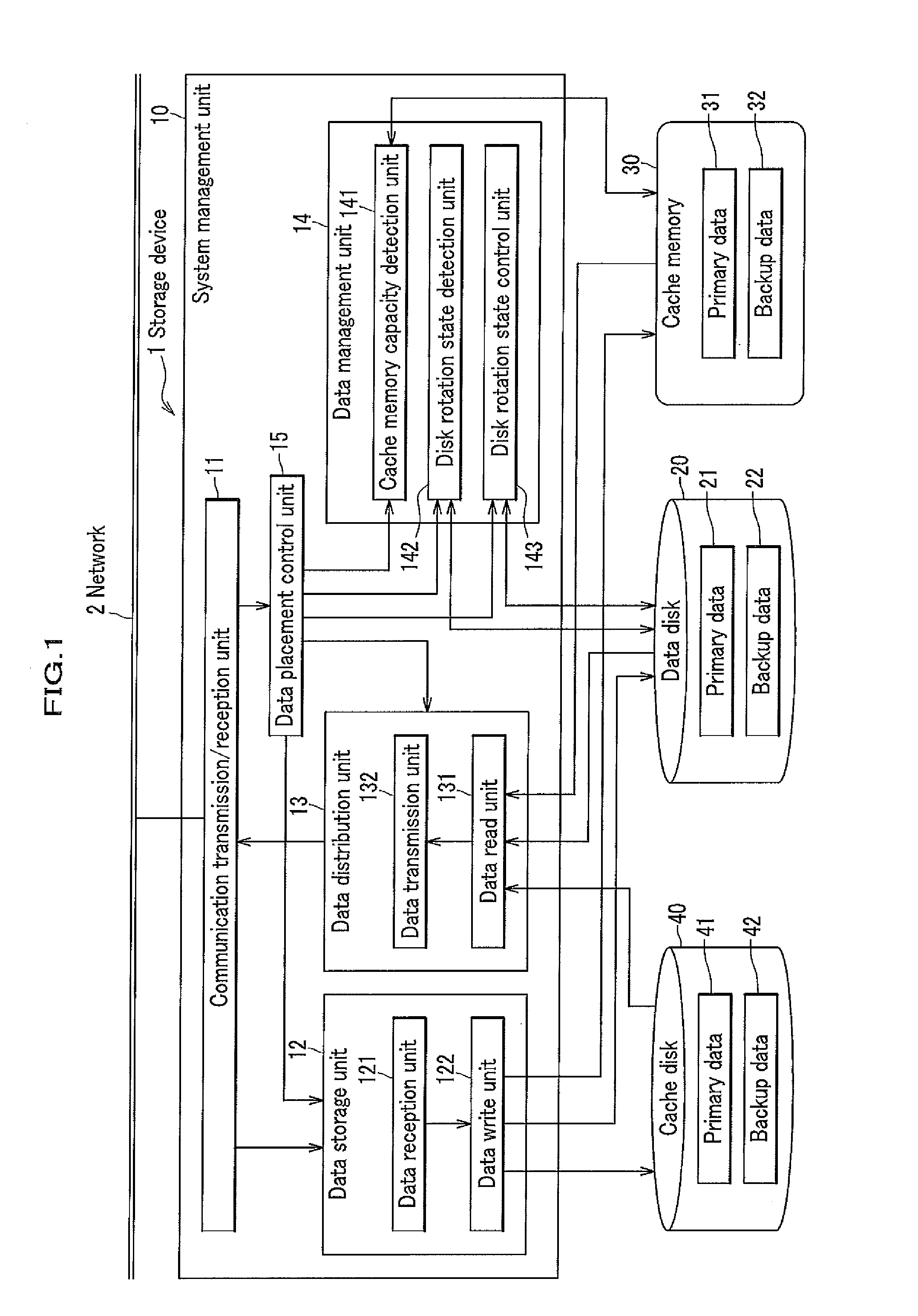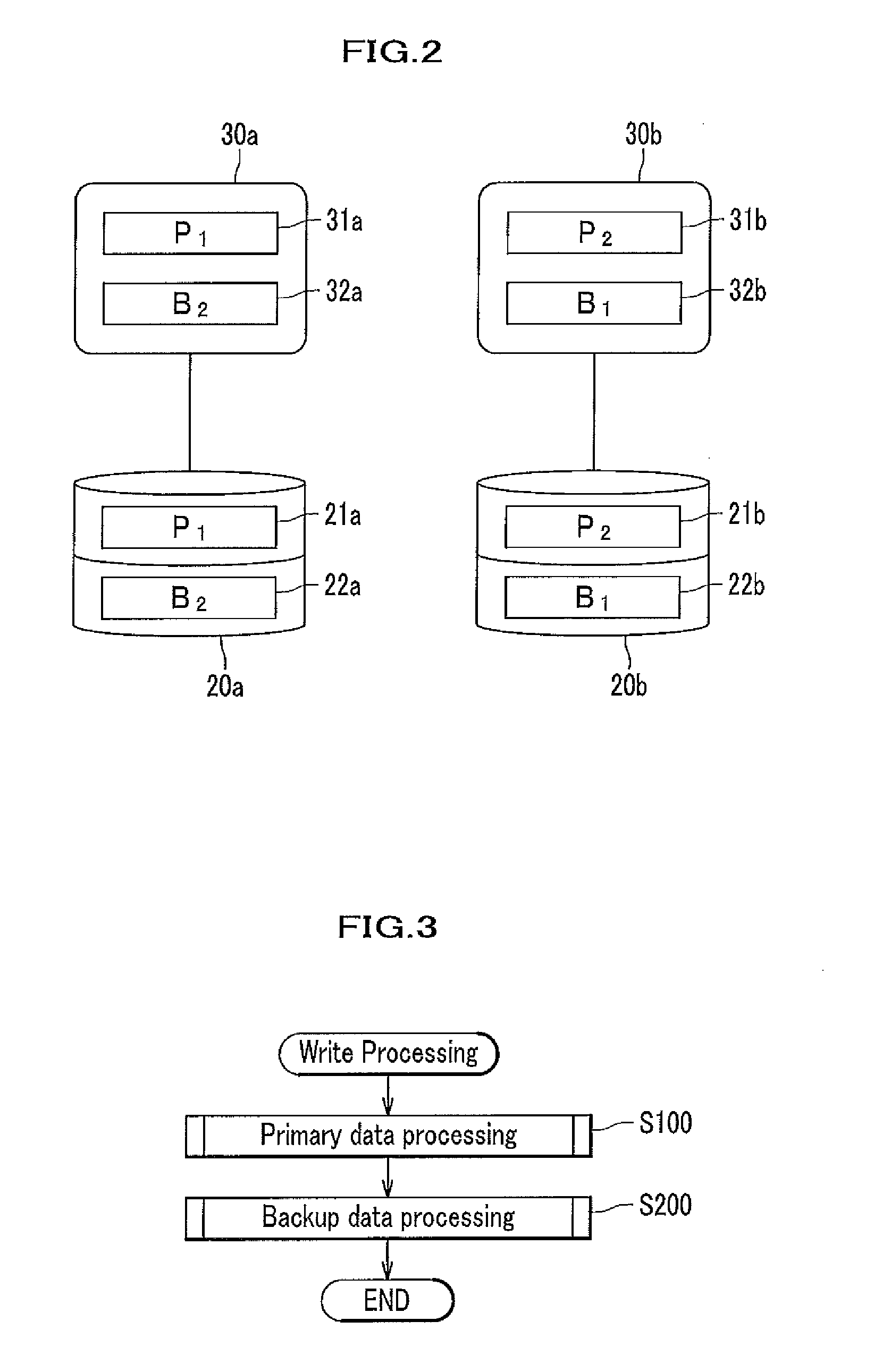Storage device, control method for same and system management program
a technology of storage devices and control methods, applied in the direction of climate sustainability, memory adressing/allocation/relocation, instruments, etc., can solve the problems of reducing the power consumption and management cost of the storage device, affecting the performance of the response time and throughput, and increasing the power consumption of the storage device. , to achieve the effect of saving power consumption and saving power consumption
- Summary
- Abstract
- Description
- Claims
- Application Information
AI Technical Summary
Benefits of technology
Problems solved by technology
Method used
Image
Examples
example
[0271]In order to demonstrate advantageous effects of the present invention, computer simulation for verifying performance of the storage device of the present invention was carried out.
(Experimental Method)
[0272]In this Example, a storage device of the present invention was configured to include the system management unit, the data disk 20, the cache memory 30, and the cache disk 40 and provide control of stopping as many data disks 20 as possible by the control method described above. An experiment was conducted for estimating an effect of reducing power consumption of the storage device of the present invention, compared to a conventional storage device. The conventional storage device used herein had a configuration in which the cache memory 30 and the cache disk 40 were not included, all of the data disk 20 were constantly in the rotation state, and a specific control as that of the Example was not provided. Table 1 lists explanations of symbols used in expressions below.
TABLE ...
PUM
 Login to View More
Login to View More Abstract
Description
Claims
Application Information
 Login to View More
Login to View More - R&D
- Intellectual Property
- Life Sciences
- Materials
- Tech Scout
- Unparalleled Data Quality
- Higher Quality Content
- 60% Fewer Hallucinations
Browse by: Latest US Patents, China's latest patents, Technical Efficacy Thesaurus, Application Domain, Technology Topic, Popular Technical Reports.
© 2025 PatSnap. All rights reserved.Legal|Privacy policy|Modern Slavery Act Transparency Statement|Sitemap|About US| Contact US: help@patsnap.com



